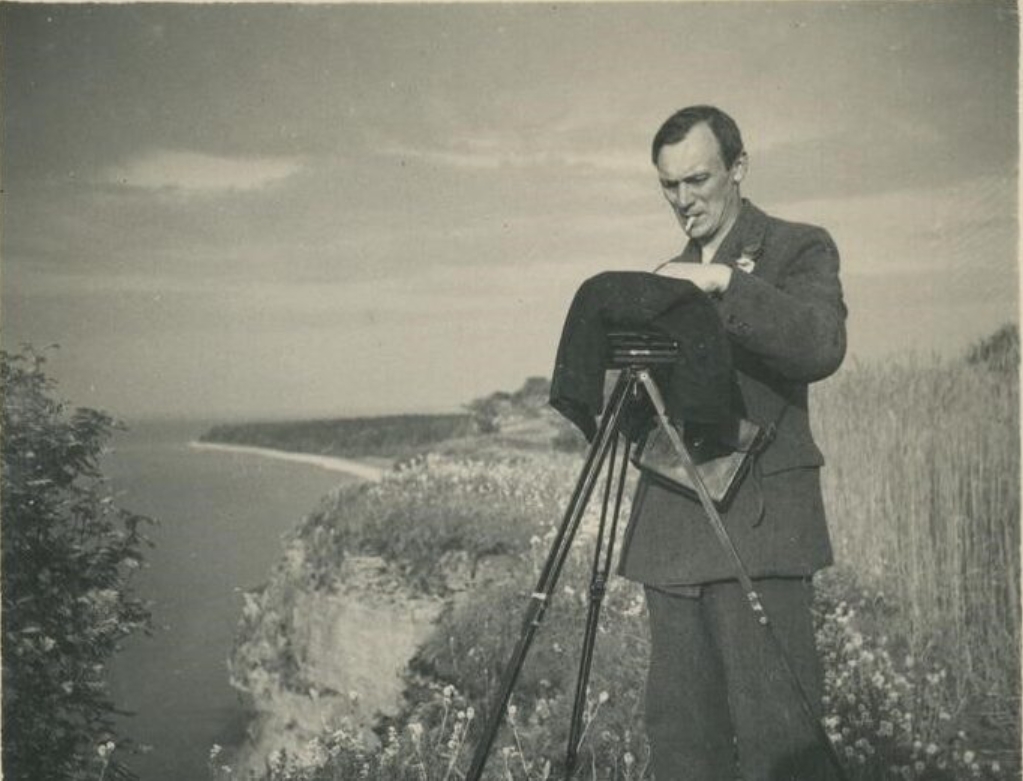Carl Sarap (1893–1942) was a publisher and one of the best-known photographers in Estonia in the late 1930s. After the bankruptcy of his publishing house "Odamees - Carl Sarap" in Tartu, he worked himself up to become a top photographer with a wide scope as a self-taught in a short time while living in Rakvere, Virumaa. Carl Sarap's photos were spread all over Estonia on postcards and envelopes, traveled around Europe at foreign exhibitions, and the many commissions could barely be completed. Sarap distinguished himself from other photographers with a clear effort to create a pan-Estonian pictorial collection from his photographs, which would express the riches of Estonian nature, living environment and cultural history, reflecting the beautiful places and sights here. Carl Sarap's photography was of a distinctively high quality in his time and still represents the zeitgeist of the Estonian 1930s photography art with the best tools. From 1929, Carl Sarap worked in Rakvere, in the book business of his life partner Johanna Triefeldt, the photography department of which was kept by Sarap. Together with Johanna, they went on summer photo tours all over Estonia until 1940, and she is also in many Sarap photos. The successful pan-Estonian series of photo postcards "Kaunis kodumaa" (1936-1940), consisting of hundreds of images, the first sets of the earth science educational photo series "Eesti pildis" and the star work of architectural photography, the photo book "Vana Narva" (1939) were the beginnings of Sarapi's large photo plans. However, the occupation of Estonia by the Soviet Union in 1940 put an end to everything.
Sarapi’s photo heritage is one of the largest preserved photo collections with a pan-Estonian reach from the 1930s, which have been realized aesthetically and technically at such a high level. There are still nearly 12,000 of his photo negatives, and in addition, there are a large number of photo postcards by Sarap (issued under the business name “J. Triefeldt”) in almost all photo collections of Estonian memory institutions and also in private collections. Carl Sarap’s preserved exhibition works and original photo enlargements are real rarities, the best of which is dedicated to the year of the Photo Museum’s analog photo theme, together with other gems of Sarap’s photographic work in this exhibition. Carl Sarap’s works exhibited at the exhibition come from the collections of the Tallinn City Museum and SA Virumaa Muuseumid, as well as the private collections of Raivo Laasmägi, Indrek Ilometsa, Rene Viljati and Tiit Pruuli.




